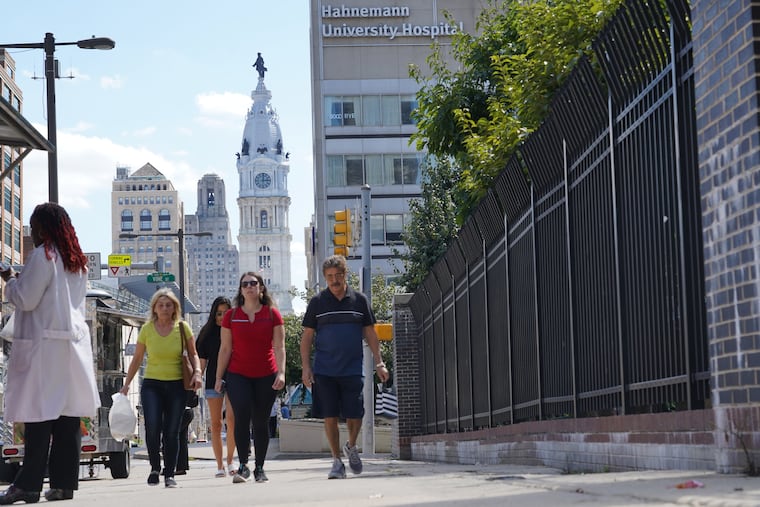Judge considers surprise move as bankrupt Hahnemann strands residents without malpractice insurance
The bankruptcy judge overseeing the Hahnemann University Hospital bankruptcy will consider whether to put the case into liquidation.

The closure of Hahnemann University Hospital last summer disrupted the lives of thousands who lost jobs there, but a separate, potentially career-altering threat looms for nearly 1,000 medical residents who trained there during the 18 months that California businessman Joel Freedman was running the Philadelphia hospital.
The bankrupt hospital has not agreed to buy medical malpractice insurance for residents and fellows that would cover the doctors into the future for incidents while they worked at the hospital. The cost of buying the insurance on their own “ranges from prohibitive at best to impossible depending on their specialties," according to a filing last week by the Ad Hoc Committee of Hahnemann Residents and Fellows.
One resident reported a cost of more than $65,000 to obtain the coverage, according to the filing in bankruptcy court.
On Monday, the tables were turned on the restructuring firm and the law firm running the Hahnemann and St. Christopher’s bankruptcies.
U.S. Bankruptcy Judge Kevin Gross scheduled a hearing for Tuesday in Wilmington at which he will gather evidence on whether the bankruptcies should be converted to a liquidation as opposed to a reorganization.
In his order, Gross cited the failure of the bankrupt companies to buy the insurance sought by the residents and their advocates. According to U.S. bankruptcy law, “failure to maintain appropriate insurance that poses a risk to the estate or to the public” provides grounds for converting the case to a Chapter 7 liquidation from a Chapter 11 reorganization.
The advocates include the American Medical Association, which hired a law firm, Potter Anderson & Corroon LLP, to represent the residents. It’s possible that hundreds of the residents who worked at Hahnemann between Jan. 10, 2018, and Aug. 9, 2019, still don’t know their coverage will expire next month. As of Friday, 180 former Hahnemann residents and fellows had joined the ad hoc group.
A conversion to liquidation would lead to the appointment of a trustee to oversee whatever assets remain. That would displace EisnerAmper L.P., a restructuring firm hired by Freedman before the bankruptcy filings to run the hospitals, and Freedman’s bankruptcy firm, Saul Ewing Arnstein & Lehr LLP. Both firms have been collecting hundreds of thousands of dollars in fees for months.
On Friday, bankruptcy officials completed the sale of St. Christopher’s for $50 million to a joint venture of Tower Health and Drexel University. That money was expected to pay off the hospitals’ senior secured lender, MidCap Financial. It’s not clear if any of that money would be available to buy the malpractice insurance.
The only other potential source of a significant amount of money to pay off creditors and other liabilities is the controversial sale of Hahnemann’s residency slots to Thomas Jefferson University for $55 million.
The malpractice insurance problem affects more than the 570 residents who were displaced when Hahnemann closed. It also hits those who finished the program in 2018 and 2019. The insurance is required to practice medicine.
Gross also cited a second possible reason for converting the cases to a liquidation, namely the “continuing loss to and diminution” of the bankruptcy assets.
Saul Ewing and EisnerAmper did not respond to a request for comments.
Separately, the Pennsylvania Professional Liability Joint Underwriting Association, a nonprofit medical malpractice insurer based in Blue Bell, offered last month to use part of its $280 million surplus to pay 50% of the premium for former Hahnemann residents and fellows.
That offer is complicated by litigation between the Blue Bell nonprofit and state officials, who have been trying for several years to claim $200 million of the surplus for state purposes. As of Monday, the Pennsylvania Insurance Department had not responded to the proposal.